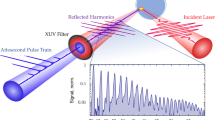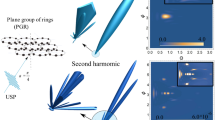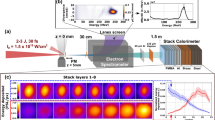Abstract
IT is impossible to state accurately the properties of high frequency radiation (wave-length <0·02 Å.U.), for we have no exact knowledge of the variation, with wave-length, of the intensity and distribution of scattered radiation. We have good reason for believing that the intensity of the radiation scattered by an atom is, on an average, proportional to its atomic number, and that the distribution becomes more and more asymmetrical as the frequency increases. I have found that a formula of Dirac's (Roy. Soc. Proc., A, 3, p. 405, 1926) fits some of the results obtained by Mr. H. M. Cave and myself in a series of experiments on the γ-rays of radium better than any other so far put forward. It may be stated that the best way to test this formula will be to examine the distribution of scattered radiation.
This is a preview of subscription content, access via your institution
Access options
Subscribe to this journal
Receive 51 print issues and online access
$199.00 per year
only $3.90 per issue
Buy this article
- Purchase on Springer Link
- Instant access to full article PDF
Prices may be subject to local taxes which are calculated during checkout
Similar content being viewed by others
Author information
Authors and Affiliations
Rights and permissions
About this article
Cite this article
GRAY, J. Properties of High Frequency Radiations. Nature 118, 801–802 (1926). https://doi.org/10.1038/118801b0
Issue Date:
DOI: https://doi.org/10.1038/118801b0
Comments
By submitting a comment you agree to abide by our Terms and Community Guidelines. If you find something abusive or that does not comply with our terms or guidelines please flag it as inappropriate.



